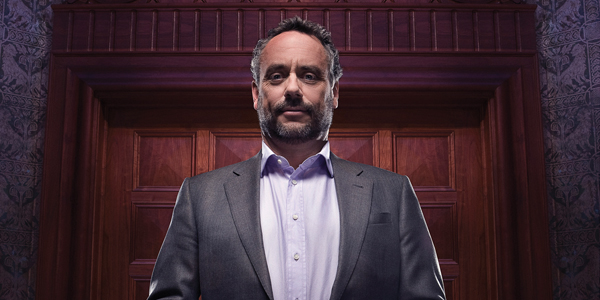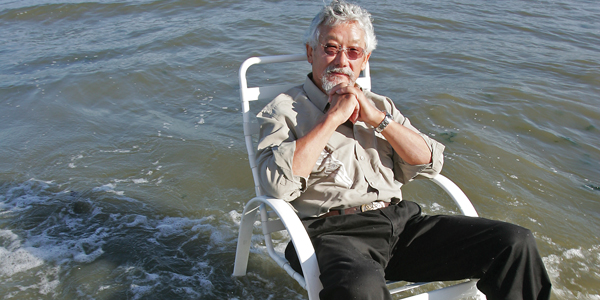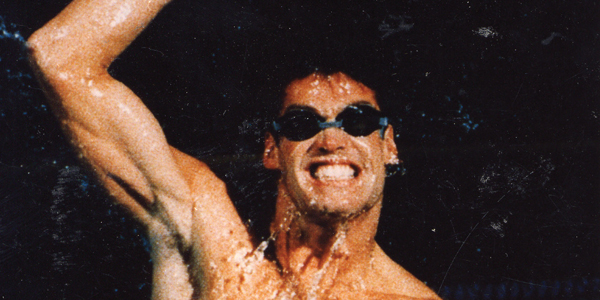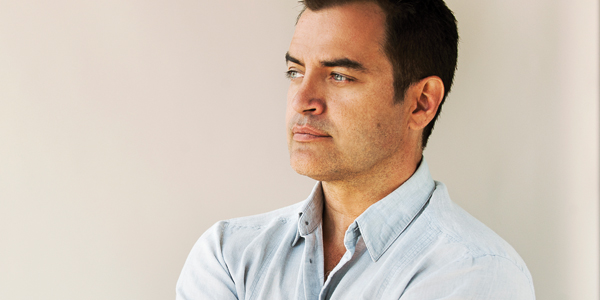Engine failure! A terrible silence pounds my ears.
I jam the stick forward. At 200 feet I only have about 20 seconds gliding time before I slam into the trees. A quick glance reveals an option: a highway! There’s a road sign and a curve, and a car coming straight toward me. I miss the obstacles but just after touchdown, my right wheel catches the soft shoulder and I spin sideways into the ditch. Sitting at 45 degrees with gasoline pouring down my back, I think, “This isn’t how you fly from the east coast to Expo ’86 in Vancouver”.
Until now, things have gone pretty much as planned, even though at times it still seems a somewhat outrageous challenge. No one has ever flown an open-cockpit ultralight 5,000 miles across this great landscape of ours, so there’s no precedent to follow. It’s been five years since I first dreamed of this flight and I’ve spent months planning for every conceivable contingency. Except for a ditch in Northern Ontario.
Were the naysayers right? “A foolhardy venture.” “An impossible flight.” “A suicide mission.” Several commercial pilots, with thousands of hours of flight experience, told me I was completely out of my element. It took me months but I finally realized that no one ever erected a statue for a critic. Ultimately, it was the romantics, folks living outside of the box who said, “Of course this is a crazy idea, but you can do it.” My certainty was this – it was a very rational, risk-taking venture, and I was up for the challenge.
But just at the moment, I had to figure my way out of a ten-foot-high ditch, which was complicated by the fact that my wheelchair was in a ground-crew vehicle miles down the highway. And I needed that chair: five years earlier, at age 33, I had broken my back in a hang-gliding accident.
I waited for a lift. Ditch sitting is a good time for contemplation, and it gave me a chance to put this into context. Had I failed? Was I finished? A loser? – Absolutely not. This was only a momentary set back, nothing more, nothing less and a reminder that life is not about our circumstances, but how we choose to handle them. It’s simply about perspective.
We can’t control the cards we are dealt with in life, but it’s our choice as to how we play them out. Nothing could be more elementary, or more profound.
In my travels as a volunteer photographer documenting development work in third world countries, I’m constantly reminded of this. In rural Uganda I photographed a child-headed family where both parents had died of AIDS and a 15-year-old was now in charge of caring for her three younger siblings. The conversation focused largely on her appreciation for our visit, not on her overwhelmingly dire circumstances. We could not leave until she had served us lunch, a big sacrifice given her limited resources. I was so profoundly moved by her positive attitude, that I was later able to provide funding to replace the crumbling walls of their clay and grass hut with a new home, as well as purchase three goats for milk and a future meat source.
Not that I needed to travel to Africa to learn a lesson on perspective. On the drive home late one winter’s night, my front tire virtually disintegrated, leaving me stranded miles from nowhere. Try as I might, the biting cold, snow drifts and the limitations of being in a wheelchair, made changing the tire impossible.
My first impulse was to pound the steering wheel in abject frustration. And then the voice in my head reminded me, “Hey, this is about perspective. You better walk the talk here, if this is what you believe in.” It took a few minutes to process that message, to decide that this would be an unexpected adventure and I would accept whatever the outcome.
I alternated between keeping warm in the car, and trying to flag down a vehicle. A proverbial Good Samaritan finally had me back on the road two hours later. I smiled all the way home, the recipient of a stranger’s generosity. A change in perspective made all the difference.
Along with choosing a positive perspective, intentional risktaking is what puts us on centre stage, dancing our lives to their fullest instead of just going through dress-rehearsals.
Unfortunately, there’s a common fallacy about risk-taking. Too often, it’s seen as a foolish, misdirected, and potentially dangerous modus operendi. But nothing could be further from the truth.
There’s a wellspring of creativity and potential within us that lies much much deeper than most will ever know. The key to its discovery? Stretching ourselves further than we’ve ever done in the past. Reaching past our comfort zones, opening doors to rooms we’ve never imagined entering before. Acts that we are all capable of.
A disquieting irony often defines our existence. We want to live fully, passionately, adventurously – yet at the same time, we love our security, routines and predictability. How unfortunate the two philosophies are diametrically opposed. We simply can’t steal second base and still keep our foot on first.
Several years ago, before my trips to Africa, a friend in Haiti suggested I visit, photograph, and create a coffee-table book of these often misunderstood people. Was she joking? Haiti, the poorest country in the western hemisphere? A landscape impossibly wheelchair in-accessible, a country known for its oppressive heat, and a language barrier to contend with? To say nothing of there being no budget or any sense of how to make this happen. Too many risks. The idea was easy to dismiss.
But once again, the voice spoke to me. “Go there. At least have a look.” I tried to shrug it off, but after two months, I finally bought my ticket. Within two days of my arrival, the same voice said, “You’re meant to do this. Just show up on the stage and don’t mess up your lines.” It was the biggest risk-taking venture I’d taken on since my cross-Canada flight.
In just over an hour, the flight from Miami to Port-au-Prince had taken me from ostentatious wealth to gut-wrenching poverty. As I looked through my view-finder, scene after scene unravelled me, stripped me to my emotional core.
I cried more in those first two weeks than I had in the previous 20 years. On several trips to Haiti over the course of the next two years, I battled traveller’s diarrhea, exhausting heat, poor lighting conditions, and miles of bumpy rides on “roads” which I eventually identified as the diminishing space between potholes.
When our four-wheel drive could travel no further, I was jostled down a mountain side on a dilapidated stretcher to photograph a project in the valley below. At times, it was simply hell.
But it was also invigorating, hugely insightful, spirit stretching, and ultimately worth every emotional and physical risk taken. In the end, our book, Where Light Speaks sold in excess of 10,000 copies and raised over $250,000 to support a children’s hospital.
The Haiti experience was a reminder of why we risk: to realize our potential, to celebrate our abilities, to live our lives as fully as they can be lived. Too often, we worry that in risking, we might fail. But falling short of a goal is never the issue. The sadness and regret lies with those who never try in the first place.
Vince Lombardi claimed that winning was everything. Well, not in my experience. It’s all about playing the game – whether we win or lose – instead of merely being a spectator in the bleachers. What a tragedy to arrive at the end of our journey, look back with lament and say, “I wish I would have” when in fact we have chances to try, to risk, to live greater lives. We simply need to embrace those opportunities when they present themselves.
Life loves to throw us ironic curves. In the ten years prior to my accident, I lived to play: waterskiing, motorcycling, hand gliding, sky diving and scuba diving… under the ice. Life was one joyous playground, and it seemed I could never get enough. To go from single barefoot water-skiing at 45 MPH to trying to roll over a three inch curb in a wheelchair seemed absurd, laughable almost. How would I ever find meaning in life again? Certainly life as I knew it was over.
During my hospital recovery days I read a saving piece of wisdom, wonderfully simple and enormously influential, “When one door closes, another will open.” I could not have imaged how many doors would open.
Within two years of being discharged, I was running an ultralight flight school as the first paraplegic flight instructor in Canada. One venture led to another… two cross-Canada ultralight flights, my first book, the Haiti experience, a drive across Canada in a vintage farm tractor for a book celebrating Canadian farmers, trips to destinations around the world photographing development work, and an unexpected career opportunity as a motivational speaker. I’ve stopped counting the doors that have and continue to open. Despite the limitations of being in a chair and despite living with chronic pain, my life is richer and fuller beyond my dreams.
The success of my first book, Gift of Wings became the genesis of a grand idea. Could I use my motivational speaking and my camera as tools for making a difference? Previous grand ideas had taught me that goals had to be nailed down, concrete-specific. So, my target would be to raise one million dollars for various charities. It’s taken 22 years, but that goal is finally within grasping distance. There are so many doors to be opened.
The most poignant flight moment ever, in 30 years of flying ultralights, happened in the middle of the Rocky Mountains. A thermal bumped my wing tip and I circled within it, round and round, to almost 12,000 feet, well above the adjacent snow-capped peaks.
There, in that glorious skyscape, out of nowhere, a majestic bald eagle suddenly slid, slowly and elegantly, past my right wingtip, before disappearing below. The encounter was brief, but so inspiring. A realization, perhaps, that we can all soar with the eagles on the two wings we’re given: a positive perspective and the choice to risk. Maybe, just maybe we’re all meant to fly higher than we’ve ever dreamed of.






